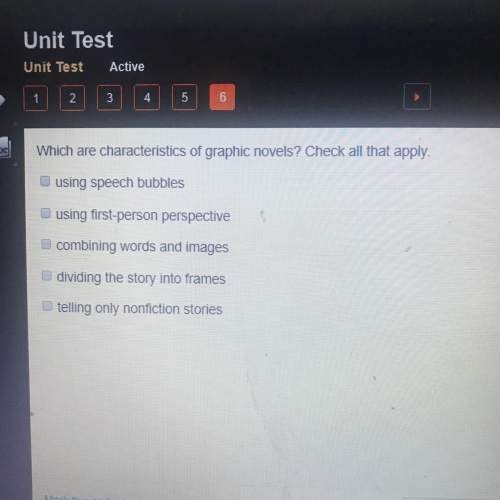
English, 22.06.2019 22:30 clairajogriggsk
Read this excerpt from guy de maupassant's "mother savage" about an old woman who takes in four prussian soldiers while her son is away fighting in the french army: but the old woman thought always of her own son, so tall and thin, with his hooked nose and his brown eyes and his heavy mustache which made a roll of black hair upon his lip. she asked every day of each of the soldiers who were installed beside her hearth: "do you know where the french marching regiment, no. 23, was sent? my boy is in it." they invariably answered, "no, we don't know, don't know a thing at all." and, understanding her pain and her uneasiness—they who had mothers, too, there at home—they rendered her a thousand little services. she loved them well, moreover, her four enemies, since the peasantry have no patriotic hatred; that belongs to the upper class alone. the humble, those who pay the most because they are poor and because every new burden crushes them down; those who are killed in masses, who make the true cannon's prey because they are so many; those, in fine, who suffer most cruelly the atrocious miseries of war because they are the feeblest and offer least resistance—they hardly understand at all those bellicose ardors, that excitable sense of honor or those pretended political combinations which in six months exhaust two nations, the conqueror with the conquered. a. a mother’s love has no barriers. b. in war, there are no winners. c. the common man is not patriotic. d. the poor suffer the most in war.

Answers: 2
Another question on English

English, 21.06.2019 18:30
1. according to mla citation style rules, when citing a book by more than one author, the authors' names should a. be listed alphabetically by first name. b. be listed alphabetically by last name. c. be listed in the order in which they appear on the title page. d. follow the title of the book. 2.which of the following items is not necessary to include in summary notes? a. all the information that is relevant to your topic and purpose b. complete publication information c. the time and date you read the source material d. specific examples 3. which of the following is not an objective of synthesizing sources? a. reviewing key ideas on a topic b. combining opinions and general statements c. exploring different points of view d. understanding the topic in depth 4.when punctuating quotations, commas and are placed inside the quotation marks. a. semicolons b. periods c. colons d. page numbers in parentheses 5. in academic writing, why would you prefer to rely on information from scholarly journals rather than magazines? a. authors in scholarly journals are generally specialists in their field. b. magazines use every-day experiences and discuss popular topics. c. scholarly journals never include visuals. d. scholarly journals are more difficult to find, and therefore more valuable. 6.when punctuating direct quotations, use a after the verb that introduces the quotation. a. comma b. dash c. colon d. seimicolon
Answers: 1

English, 21.06.2019 22:00
Shape 1 and shape 2 are plotted on a coordinate plane. which statement about the shapes is true? a. shape 1 and shape 2 are not congruent.b. a translation will prove that shape 2 is congruent to shape 1.c. a rotation and a translation will prove that shape 2 is congruent to shape 1.d. a reflection, a rotation, and a translation will prove that shape 2 is congruent to shape 1.
Answers: 3

English, 22.06.2019 01:00
Read the quotation from "an occurrence at owl creek bridge." and now he became conscious of a new disturbance. striking through the thought of his dear ones was a sound which he could neither ignore nor understand, a sharp, distinct, metallic percussion like the stroke of a blacksmith’s hammer upon the anvil; it had the same ringing quality. he wondered what it was, and whether immeasurably distant or near by—it seemed both. its recurrence was regular, but as slow as the tolling of a death knell. he awaited each stroke with impatience and—he knew not why—apprehension. the intervals of silence grew progressively longer, the delays became maddening. with their greater infrequency the sounds increased in strength and sharpness. they hurt his ear like the thrust of a knife; he feared he would shriek. what he heard was the ticking of his watch. which best describes the effect of the narration in the excerpt? it suggests that the man being executed feels tranquil and at peace. it suggests that the narrator is sympathetic to the man being executed. it suggests that the plot will become less tense as the story continues. it suggests that the story will become more intense and mysterious.
Answers: 1

English, 22.06.2019 02:30
Which sentence you is an example of chronological structure in “the city without us”?
Answers: 1
You know the right answer?
Read this excerpt from guy de maupassant's "mother savage" about an old woman who takes in four prus...
Questions

Biology, 14.12.2019 08:31



Chemistry, 14.12.2019 08:31

Mathematics, 14.12.2019 08:31





Mathematics, 14.12.2019 08:31

Mathematics, 14.12.2019 08:31

English, 14.12.2019 08:31

Computers and Technology, 14.12.2019 08:31

Mathematics, 14.12.2019 08:31

Mathematics, 14.12.2019 08:31


Mathematics, 14.12.2019 08:31

Biology, 14.12.2019 08:31

Physics, 14.12.2019 08:31




